Ecuador Flag Meaning
Three horizontal stripes with yellow taking the top half and blue and red each taking a quarter, featuring the national coat of arms in the center, representing the abundance of the land, the sky and ocean, and the blood shed for independence.
- Continent
- South America
- Adopted
- 1860
- Ratio
- 1:2
- Colors
- yellow, blue, red
- Designer
- Unknown

Symbolism
Yellow Stripe (Double Width): Represents the abundance and fertility of Ecuador's diverse landscapes, symbolizing the golden sunshine, agricultural wealth, and the rich natural resources including the Amazon rainforest, Andean highlands, and coastal plains.
Blue Stripe: Represents the sky above Ecuador and the Pacific Ocean that borders its western coast, symbolizing the clear heavens over the equatorial nation and the maritime heritage of the coastal regions.
Red Stripe: Represents the blood shed by heroes who fought for independence from Spanish colonial rule, symbolizing the courage and sacrifice of those who died for Ecuador's freedom and sovereignty.
National Coat of Arms: Features the Andean condor, Mount Chimborazo, a river, a steamship, and the sun, representing the diverse geography from coast to mountains to Amazon, national symbols, and Ecuador's position on the equator.
History
- Pre-1532: Various indigenous peoples including the Quitu, Cañari, and later the Inca Empire controlled different regions, with sophisticated civilizations adapted to the diverse environments from coast to highlands to Amazon.
- 1532-1821: Spanish conquistador Francisco Pizarro conquered the region, establishing the Audiencia of Quito under Spanish colonial rule, with Spanish flags representing nearly three centuries of colonial administration and cultural transformation.
- 1821-1830: Ecuador gained independence as part of Simón Bolívar's Gran Colombia, using various flags of the larger republic while maintaining hopes for South American unity under Bolívar's vision.
- May 13, 1830: Ecuador separated from Gran Colombia to become an independent republic under General Juan José Flores, beginning the process of establishing distinct national symbols and identity.
- 1860: Ecuador adopted the current flag design under President Gabriel García Moreno, establishing the yellow-blue-red tricolor with coat of arms that represents the modern Republic of Ecuador.
- 1895-1912: The Liberal Revolution led by Eloy Alfaro brought significant modernization including the railroad connecting Quito and Guayaquil, while maintaining the flag as a symbol of progress and national unity.
- 1963-Present: Ecuador discovered oil in the Amazon region, transforming its economy while the flag has represented the nation through political instability, economic challenges, and efforts to balance development with environmental protection.
Trivia
- Ecuador is named after the equator, which runs through the country just north of Quito, making it one of the few countries named after a geographic feature.
- The flag represents a country that includes the Galápagos Islands, where Charles Darwin developed his theory of evolution by studying unique species found nowhere else on Earth.
- Ecuador is one of the world's most biodiverse countries despite its small size, containing more species per square kilometer than anywhere else on the planet.
- The flag flies over a country with four distinct regions: the coast (Costa), highlands (Sierra), Amazon rainforest (Oriente), and Galápagos Islands (Región Insular).
- Ecuador dollarized its economy in 2000, replacing the sucre with the US dollar as its official currency following a severe economic crisis.
- Quito, the capital, was the first city to be declared a UNESCO World Heritage Site for its well-preserved colonial architecture and historic center.
- Ecuador is the world's largest exporter of bananas and a major producer of roses, with its flowers being exported worldwide, particularly for Valentine's Day.
- The flag represents a country where indigenous peoples make up about 25% of the population, with Quechua being widely spoken alongside Spanish.
- Cotopaxi, one of the world's highest active volcanoes, is located in Ecuador and represents the country's position on the Pacific Ring of Fire.
- Ecuador has constitutional rights for nature (Rights of Nature), making it one of the first countries to grant legal rights to the environment.
- The Panama hat actually originated in Ecuador, where it has been woven for centuries in the coastal town of Montecristi using toquilla palm fibers.
- Ecuador's Amazon region covers about half the country and is home to numerous indigenous groups who maintain traditional lifestyles and knowledge of rainforest ecology.
- The country has experienced significant political instability with numerous presidents since returning to democracy, reflecting ongoing challenges in governance and economic management.
- Ecuador is home to the highest capital city in the world (Quito at 2,850 meters above sea level) and straddles the Continental Divide in the Andes Mountains.
- The flag represents a country that has produced internationally acclaimed literature, including Jorge Icaza's novels that brought attention to indigenous rights and social justice issues.
Related Countries

Colombia
South America
Three horizontal stripes with yellow taking the top half and blue and red each taking a quarter, representing the golden wealth of the land, the seas and rivers, and the blood shed for independence from Spanish rule.
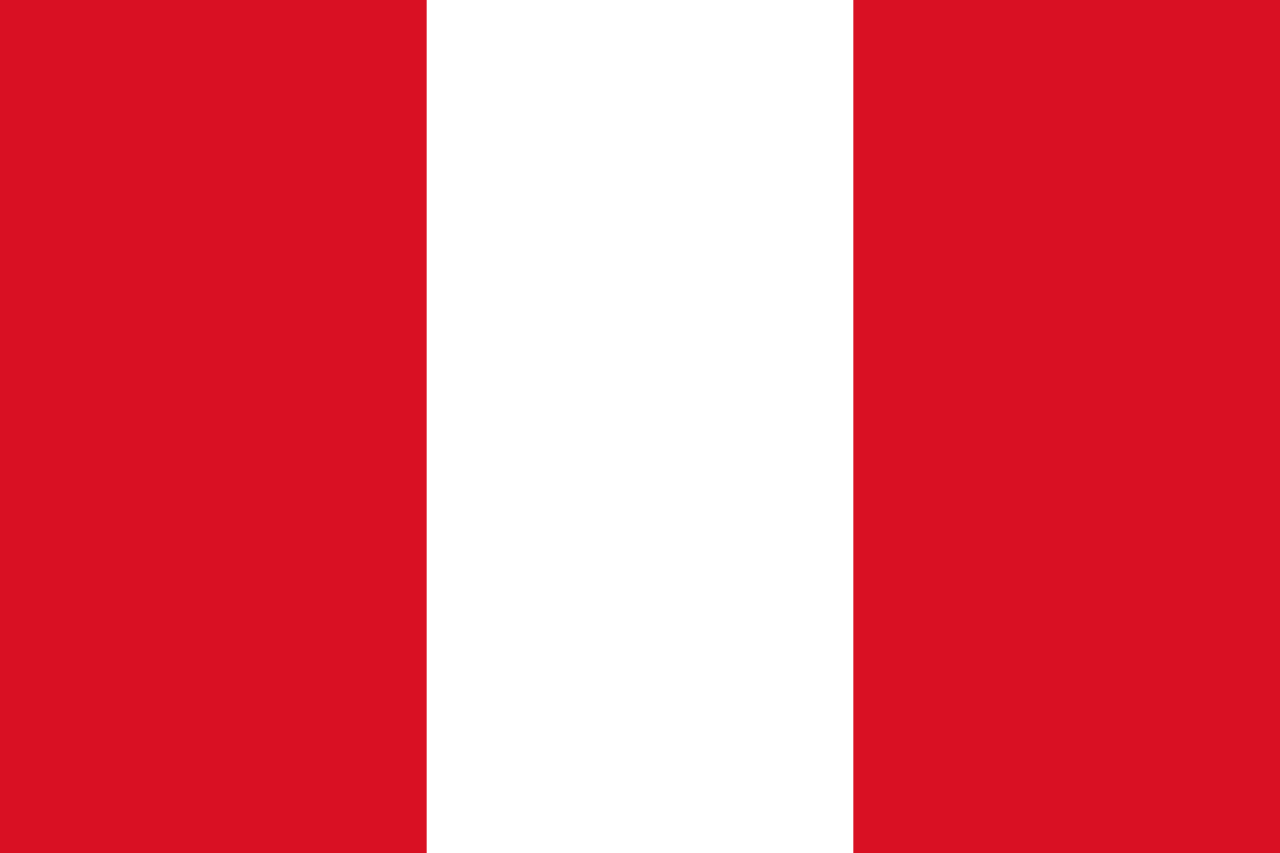
Peru
South America
A vertical triband of red, white, and red. The civil flag is a simple triband, while the state flag includes the national coat of arms in the center white band. The design reflects Peru’s struggle for independence and its natural richness.
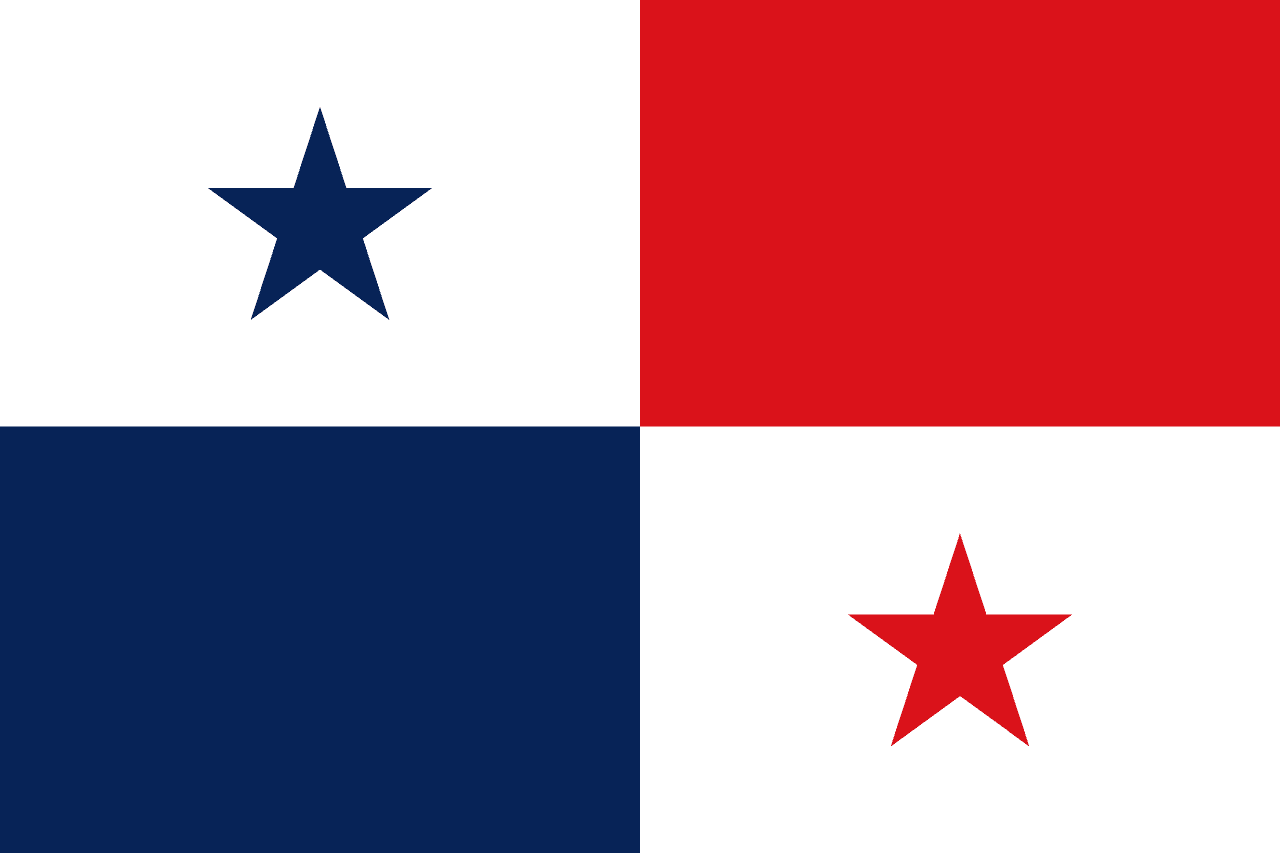
Panama
North America
Quartered flag with white and blue star in top left, red in top right, blue in bottom left, and white with red star in bottom right. The design symbolizes political balance and the ideals of peace and progress.
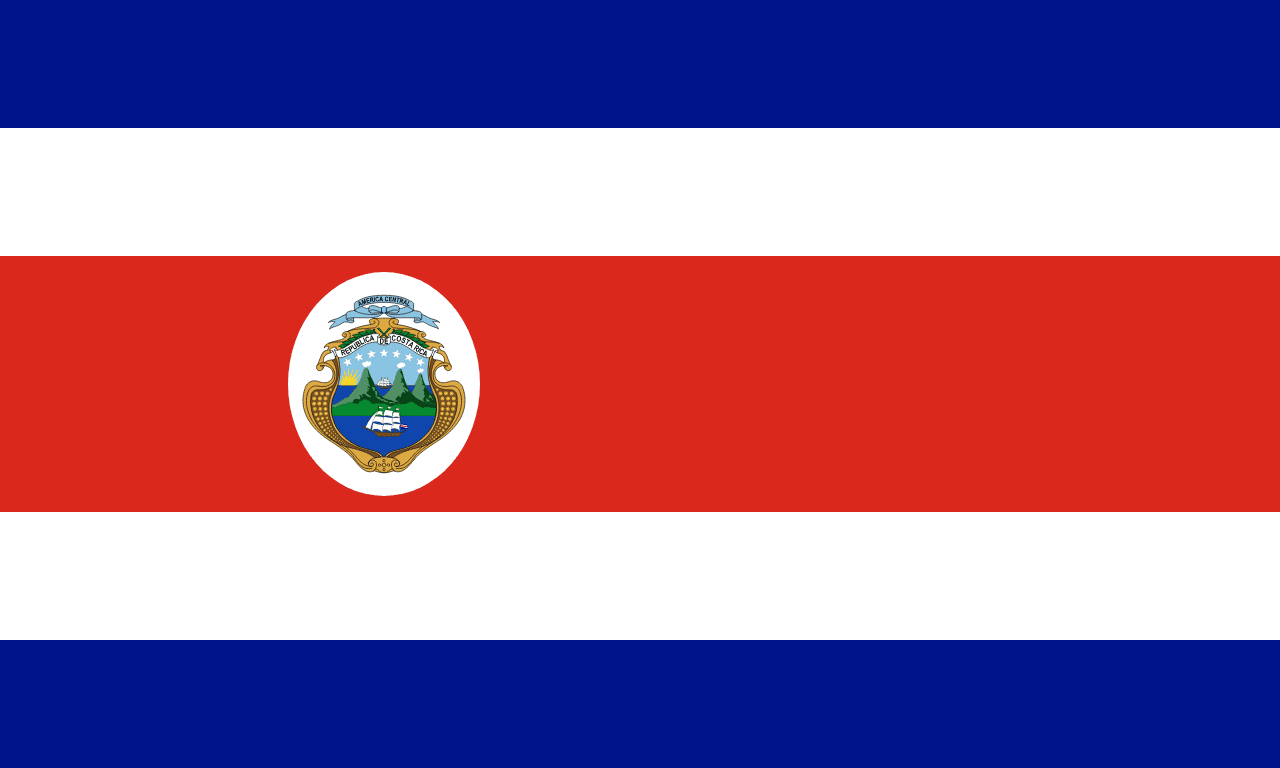
Costa Rica
North America
Five horizontal stripes with blue at top and bottom, white stripes below and above the central red stripe, and the national coat of arms on the red stripe, representing the sky and opportunities, peace, and the warmth of the Costa Rican people.
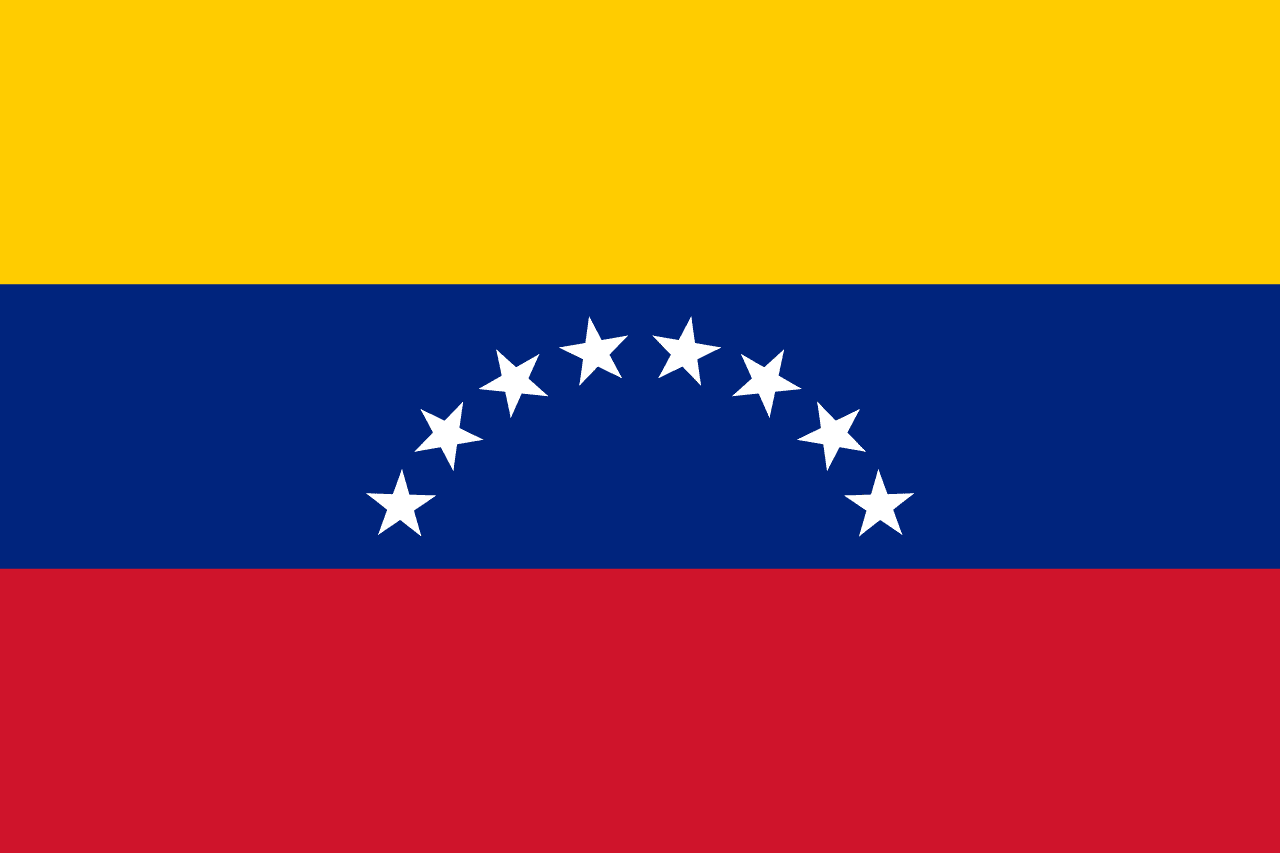
Venezuela
South America
Three horizontal stripes of yellow, blue, and red with eight white stars in an arc on the blue stripe and the coat of arms on the upper hoist corner, representing the wealth of the land, the seas separating Venezuela from Spain, the blood shed for independence, and the eight original provinces that declared independence.
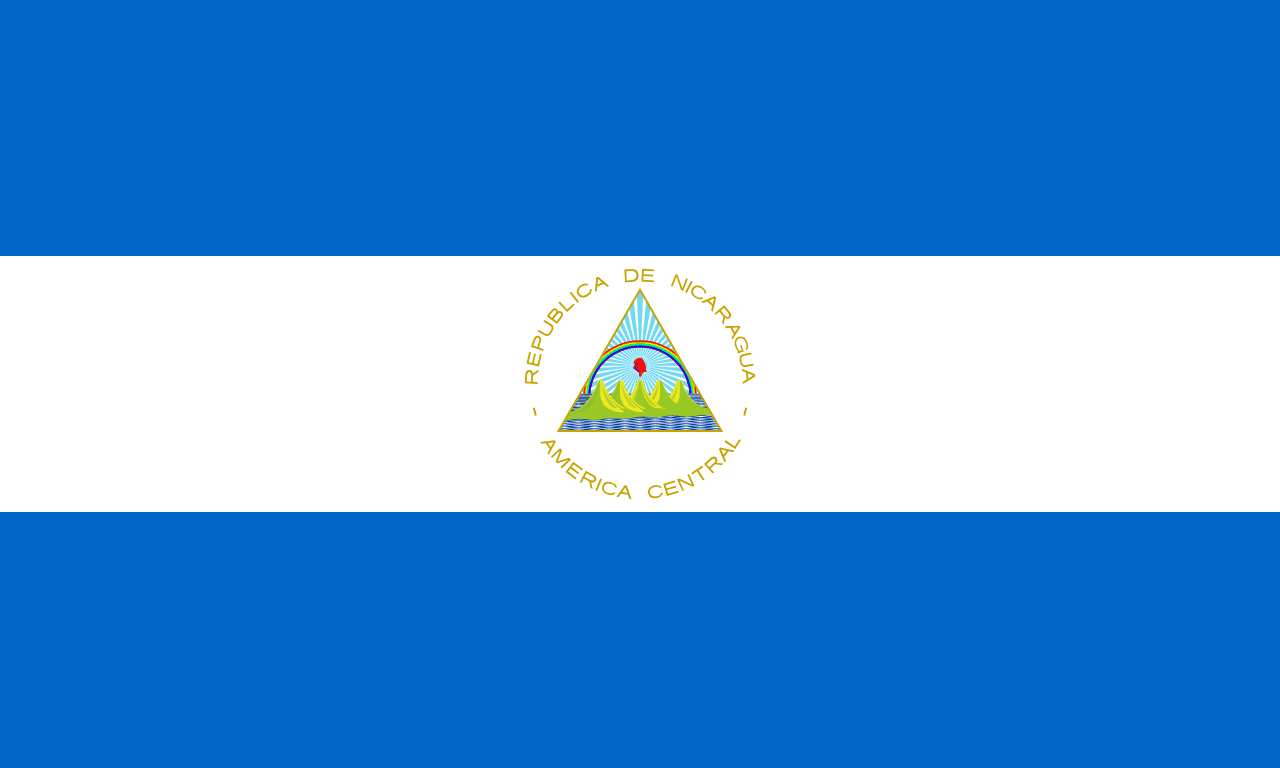
Nicaragua
North America
Three horizontal stripes of blue, white, and blue with the national coat of arms centered on the white stripe, representing Nicaragua's position between two oceans and its revolutionary ideals of liberty and peace.